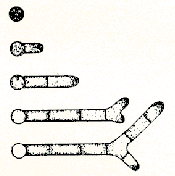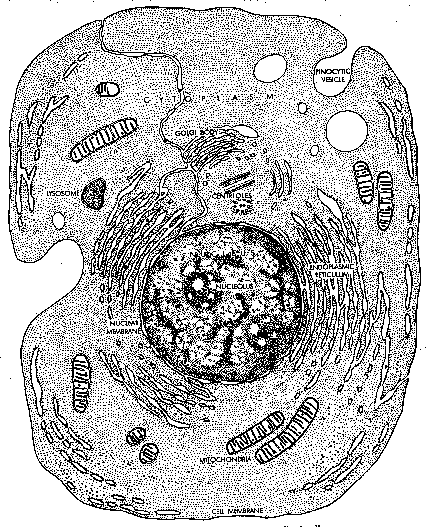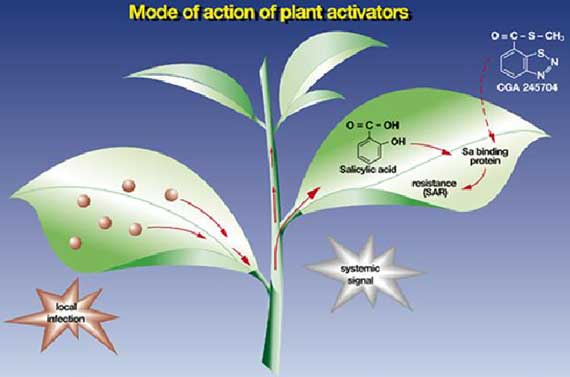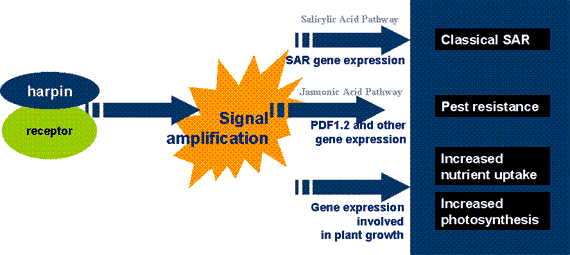Modes of Action for Plant Disease Management Chemistries
Michael Matheron
University of Arizona
Yuma Agricultural Center
Application of chemicals to plants in order to prevent or inhibit
disease development is a fundamental means of managing diseases caused
by fungi. Knowledge of the effectiveness of particular compounds is important
for achieving effective disease control. Equally important is an understanding
of the underlying physiological mode of action of plant disease management
materials. The following information is an outline of an oral presentation
concerning the modes of action of plant disease management chemistries.
Presented December 6, 2001 at the 11th Annual Desert Vegetable Crop Workshop,
Yuma, AZ
Biological mode of action
Fungicidal action can be expressed in one of two physically visible ways.
- Inhibition of spore germination.
- Inhibition of fungus growth.

Physiological mode of action
What happens at the cellular level
to cause the visible effects on spore germination and fungal growth?
Why is it important to be familiar with the physiological mode of action of a fungicide?
For resistance management and preservation of fungicide
effectiveness.
The physiological mode of action
- Fungicides are metabolic inhibitors and their
modes of action can be classified into four broad groups.
- Inhibitors of electron transport chain.
- Inhibitors of enzymes.
- Inhibitors of nucleic acid metabolism and protein synthesis.
- Inhibitors of sterol synthesis.
A typical cell and cell components
- Electron transport chain
- Enzymes
- Nucleic acid metabolism and protein synthesis
- Sterol synthesis
Inhibition of electron transport chain
(Respiration in mitochondria)
- Sulfur
- Disrupts electron transport along the cytochromes
- Strobilurins (azoxystrobin, kresoxim-methyl,
pyraclostrobin, trifloxystrobin)
- Inhibit mitochondrial respiration, blocking the cytochrome bc1 complex.
Inhibition of enzymes
- Copper
- Nonspecific denaturation of proteins and enzymes.
- Dithiocarbamates (maneb, manzate, dithane,
etc)
- Inactivate –SH groups in amino acids, proteins and enzymes.
- Substituted aromatics (chlorothalonil,
PCNB)
- Inactivate amino acids, proteins and enzymes by combining with amino and thiol groups.
- Organophosphonate (fosetyl-Al)
- Disrupts amino acid metabolism.
Inhibition of nucleic acid metabolism and protein synthesis
- Benzimidazoles (thiophanate-methyl)
- Inhibit DNA synthesis (nuclear division).
- Phenylamides (mefenoxam)
- Inhibits RNA synthesis.
- Dicarboximides (iprodione, vinclozolin)
- Inhibits DNA and RNA synthesis, cell division and cellular metabolism.
Inhibition of sterol synthesis
(Inhibit demethylation of ergosterol)
- Ergosterol is the major sterol in most fungi.
- It is essential for membrane structure and function.
Sterol inhibiting fungicides
- Imidazoles (imazalil)
- Triazoles (propiconazole, myclobutanil, tebuconazole, triflumazole)
- Morpholines (dimethomorph)
- Inhibits sterol production at different site than imidazoles and triazoles. Affects cell wall production.
Why is it important to know the physiological mode of action of fungicides ?
- For resistance management and preservation of
fungicide effectiveness.
- Incorporate fungicides with different modes of action into a disease
management program.
- In alternation or as a mixture.
- Incorporate fungicides with different modes of action into a disease
management program.
Plant activators
- In contrast to conventional fungicides, plant activators have no direct effect on pathogens.
- Plant activators induce plants to produce natural disease-fighting compounds.
Plant activators
- Acibenzolar (Actigard)
- Harpin (Messenger)
- Biological control organisms
Natural Plant Defense Mechanisms
- Salicylic acid pathway – Induces SAR (systemic acquired resistance), a natural biological defense response to pathogen attack.
- Jasmonic Acid Pathway - Induces the production of disease and insect defense compounds.
Salicylic Acid Pathway
- Production of active oxygen (hydrogen peroxide,
peroxidase)
- Peroxidases have been associated with fungal cell wall degradation and pathogen defense signaling
- Thickening plant cell wall
- Increasing lignification
- Production of phenolic esters that strengthen cross linking
Salicylic Acid Pathway
- Systemic and local accumulation of Pathogenesis
Related Proteins (PR-Proteins)
- chitinases
- ß-1,3 Glucanase
- Systemic accumulation of anti-microbial compounds called phytoalexins.
Chitinases
- Chitin is the major component of all fungal cell walls except for the Oomycetes
- Chitinases break down fungal cell walls
- Chitinases can break down insect exo-skeletons
- Activity is greatly enhanced by Glucanase
ß-1,3 Glucanases
- Glucans and cellulose are the major components of Oomycete cell walls
- Antifungal activity is most often in combination
with Chitinase
- Direct defense: Degrade fungal cell walls
- Indirect defense: Promoting the release of oligosaccharides that act as elicitors of defense reactions
Jasmonic Acid Pathway
- Farmer and Ryan (1990) discovered that jasmonic acid volatilized from sagebrush could trigger defense gene expression in adjacent tomatoes
- Jasmonic acid volatiles act as attractants for beneficial insects
- Jasmonic acid induces the production of disease
and insect defense compounds.
- Defense Proteins
- Phytochemicals
Phytochemicals
- Different from phytoalexins in that phytochemicals
are induced by wounding.
- Phenolics
- Furanocoumarins, Coumarins, Tannins, Lignin, other phenolics
- Terpenoids
- Alkaloids
- Phenolics
Examples of plant activators
- Acibenzolar (Actigard)
- Harpin (Messenger)
- Harpin is a natural protein found in many common pathogenic microorganisms;
- Erwinia amylovora, E. chrysanthemi, Pseudomonas syringae, Pseudomonas solanecarum, Xanthomonas campestris.
- Harpin is a natural protein found in many common pathogenic microorganisms;
- Biological control organisms
Mode of action - Actigard

Induction of Systemic Acquired Resistance
Mode of action - Messenger

Issued in furtherance of Cooperative Extension work, acts of May 8 and June 30, 1914, in cooperation with the U.S. Department of Agriculture, James A. Christenson, Director Cooperative Extension, College of Agriculture, The University of Arizona.
The University of Arizona is an equal opportunity, affirmative action institution. The University does not discriminate on the basis of race, color, religion, sex, national origin, age, disability, veteran status, or sexual orientation in its programs and activities.
Because labels are subject to frequent change, always consult the label attached to the product before using any pesticide. The user must assume responsibility for proper application and for residues on crops as well as for damage or injury caused by pesticides, whether to crop, person or property.
Any products, services, or organizations that are
mentioned, shown, or indirectly implied in this web document do not imply
endorsement by The University of Arizona.
Information provided by:
Michael E. Matheron, matheron@ag.arizona.edu
Plant Pathologist, Yuma County
University of Arizona, Tucson, Arizona.
Material updated December 2001
Home | Cotton | Veggies| Forages | Grains | Citrus | Crop x Crop
Insects | Diseases| Weeds | Pesticides | News | Irrigation
Weather | Research | Photos | Contacts | General Info. | Site Map
document located at: http://cals.arizona.edu/crops/diseases/papers/dischemistry.html
Copyright © 2001 University of Arizona,
College of Agriculture and Life Sciences
Webmaster: Al Fournier (fournier@ag.arizona.edu)